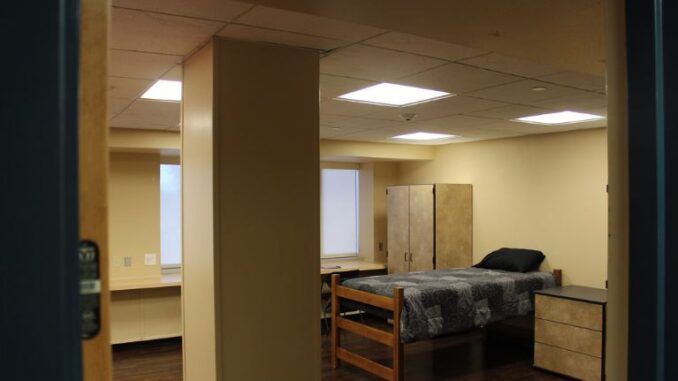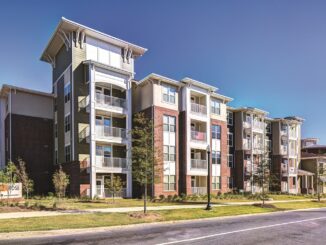
Colliers’ Sean Baird on what’s driving this trend, how to finance these projects, and potential impacts on the market.
Over the past several months, we’ve seen a spike in the number of student housing communities that buyers are converting to traditional multifamily properties.
Here is a rundown of the factors driving this trend, what types of student housing properties are a good fit for conversions, financial issues to consider, and potential impacts to student housing and multifamily markets.
When a Conversion Makes Sense
Buyers are interested in converting student housing communities in any market that meets the following criteria:
- Sub-90 percent occupancy;
- Located more than 1 mile from campus;
- Located in a market where newer, pedestrian-friendly student housing communities are located less than a half-mile from campus;
- Located in a strong multifamily market.
Simply put, the competitive landscape favors student housing communities that are within an easy walk of campus. In turn, it can make sense to convert an older, lower-performing asset further from campus to traditional multifamily.
The Upside Potential
Multifamily institutional investors, family offices and high-net-worth individuals comprise the biggest categories in the buyer pool for these conversions. In fact, when student housing properties meet the criteria listed above, we’ve seen these groups bid much more aggressively than typical student housing operators. Multifamily also offers better capital market fundamentals such as lower cap rates, higher financing leverage, and lower interest rates.
In strong multifamily markets, keys to success in acquiring and converting a student housing property look something like this:
- Purchase the property for less than 50 percent of replacement cost;
- Invest $40,000 to $50,000 per unit to redesign floorplans and make upgrades;
- Increase occupancy by reducing the number of bedrooms included in floorplans;
- Set competitive rental rates compared to other multifamily communities in the area;
- Lower expenses.
In terms of competitive advantage in the local multifamily market, student housing conversions can offer families attractive renting options. For example, converting a 4-bedroom/4-bathroom student housing floor plan into a 3/3—where one bedroom is a master bedroom—can offer a family of four better living options than a traditional 2/2 multifamily floorplan. In markets where there is scarcity of one-bedroom units, converting the 4/4 into a 2/2 and a 1/1 has proven very attractive as well.
Costs to Keep in Mind
Those buying a student housing community to convert to traditional multifamily can expect expenses that include, but are not limited to:
- Remodeling floorplans: Renovations may include reconfiguring floorplans to reduce the number of bedrooms and bathrooms, moving walls and closing hallways.
- Upgrading finishes: As many of these properties are older, upgrading finishes will help meet the current standards of a multifamily renter. For example, replacing kitchen and bathroom countertops with granite, installing new stainless-steel appliances and replacing carpet with hard flooring may be necessary.
- Replacing or upgrading amenities: Community amenities may need to be added or converted to align with renters’ expectations. For example, this might involve upgrading equipment in the fitness center, converting an unused sand volleyball court into a playground or turning study rooms into individual offices.
Before purchasing a student housing property for multifamily conversion, buyers should be aware of the floorplans and whether they are viable to chop up. For example, after converting a floorplan, will you have any rooms without windows? Or if you’re planning to move a bathroom to a location where there’s no plumbing in the wall, do you have the budget to add in plumbing costs?
How Conversions Impact the Local Markets
It’s clear that students prefer to live within an easy walk of campus. So, when student housing properties further from campus are converted to traditional multifamily, this helps the student housing market stabilize across the board, with an increase in occupancy and rents for properties that are closer to schools.
Also, in markets where multifamily is in high demand, converting these properties adds more multifamily inventory to the area. It’s a win-win.
In closing, we expect this trend of converting lower-performing student housing properties to multifamily to continue for the next several years, especially in markets where student housing development is underway within a half-mile of universities. Sub-90 percent-occupied student housing communities over a mile from campus will continue offering multifamily buyers a great option for converting properties and creating appeal for multifamily renters.
Source: Multihousingnews.com



